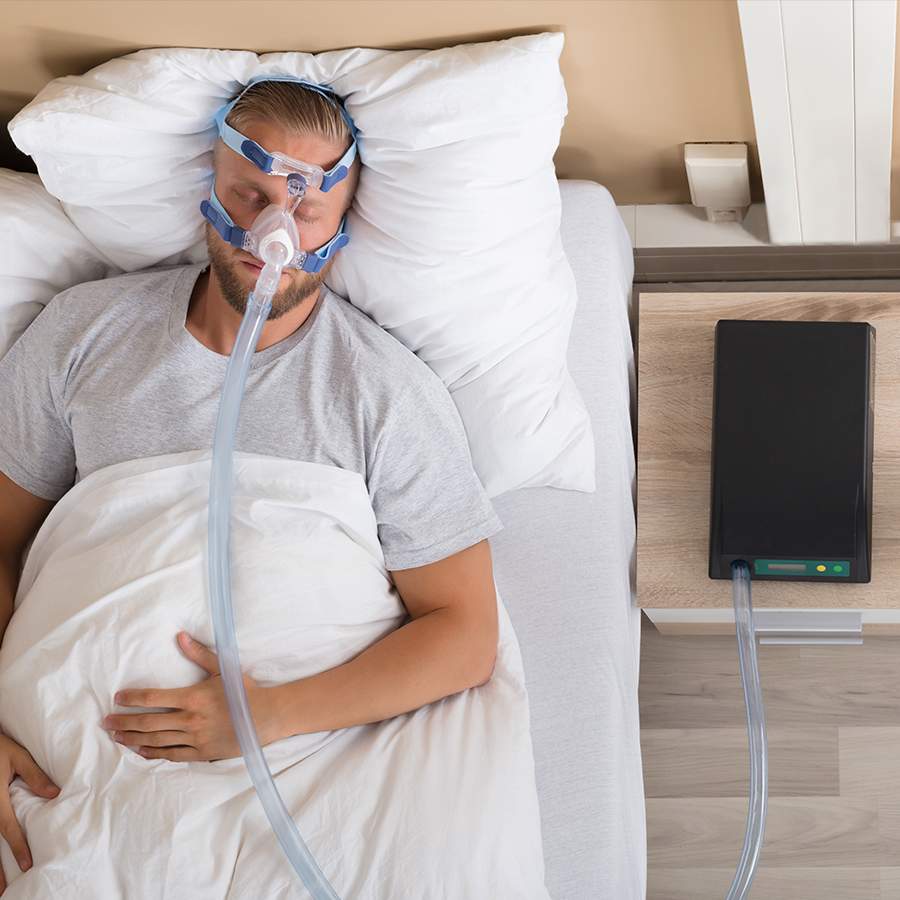Latest Posts
Common Reasons for CPAP Intolerance
Treating Sleep Apnea with Custom Oral Appliances
Common Warning Signs of Obstructive Sleep Apnea
Simple and Effective: NightLase Laser Snoring Therapy
What Is The Best Sleep Position For People With Sleep Apnea?
Archives
September 2020
July 2019
June 2019
May 2019
April 2019
February 2019
December 2018
September 2018
July 2018
May 2018
April 2018
March 2018
February 2018
January 2018
November 2017
October 2017
September 2017
August 2017
July 2017
June 2017
May 2017
February 2017
January 2017
December 2016
September 2016
August 2016
April 2016
March 2016
February 2016
January 2016
December 2015
November 2015
April 2014
March 2014
February 2014
January 2014
Causes of Sleep Apnea
Sleep apnea is a disorder that affects people when their breathing gets interrupted during sleep. A person suffering from sleep apnea stops breathing several times in their sleep, which can cause them to not receive enough oxygen.
Main Causes of Sleep Apnea
Sleep apnea can affect anyone, from young children to older people. You can suffer from this condition if any of the following are true for you:
-
If you are obese or overweight
-
If you are a male
-
If you are over 40 years of age
-
If you have a family history of sleep apnea
-
If you have a large neck – 17 inches or more for men and 16 inches or more for women
-
If you have large tonsils or a large tongue
-
If you have small jawbones
-
If you suffer from gastroesophageal reflux or heartburn
-
If you have sinus problems, allergies, or a deviated septum that can cause nasal obstructions
Types of Sleep Apnea
There are two types of sleep apnea:
-
Obstructive Sleep Apnea (OSA) – This is the most common form of sleep apnea. It is caused by blockage of the airway when sleeping, the result of the collapsing of the soft tissue at the back of the throat.
-
Central Sleep Apnea – This type occurs when the brain fails to signal the muscles to breathe. It generally occurs due to an instability in the control center of the respiratory system.
Effects of Sleep Apnea
Sleep apnea, if left untreated, can cause a lot of issues. On a daily basis, it can reduce your performance in everyday activities. It can also cause long-term health problems, including the following conditions:
-
High blood pressure
-
Heart attacks, heart failure, and irregular heartbeats
-
Stroke
-
Diabetes
-
Headaches
-
Depression
-
Attention deficit hyperactivity disorder (ADHD)
Treating Sleep Apnea
Mild cases of sleep apnea can be treated by making modifications to your lifestyle:
-
You will have to lose weight.
-
You will have to stop consuming alcohol.
-
You should avoid taking sleeping pills.
-
You should stop smoking. Smoking worsens the swelling in the upper airway, causing increased snoring.
-
You should change your sleeping position to improve your breathing. Avoid sleeping on your back, because this blocks your airway further.
Severe cases of sleep apnea can be treated by therapy or surgery:
-
Continuous Positive Airway Pressure (CPAP) Therapy – This is the most common treatment for sleep apnea. In CPAP therapy, you will have to sleep wearing a mask over your nose and mouth. A machine attached to the mask will keep supplying air to the nose. The continuous flow of air will ensure that the airways are open throughout and that your breathing is regular.
-
Surgery – Nasal surgery is the most common surgery performed to correct sleep apnea. It rectifies nasal problems like a deviated septum. Mandibular maxillar advancement surgery corrects throat obstructions. Uvulopalatopharyngoplasty (UPPP) removes soft tissues at the back of the throat and palate to increase the width of the airway.
Learn More Today
Suffering from sleep apnea? The Snore Experts can help! To address your sleep apnea, contact us today and arrange an informative consultation .
Posted by abet on Aug 19th, 2016 8:08 pm
Filed under General. You can follow any responses to this entry through the
RSS 2.0
feed. Both comments and pings are currently closed.
Comments are closed.

CPAP/APAP
HOW DO I USE A CPAP?
Positive Airway Pressure (PAP) is considered by many the gold standard for the treatment of sleep apnea, especially for very severe cases. The CPAP and APAP machines are designed to increase air pressure going through the throat. This prevents the airway from collapsing during inhalation. At Snore Experts, we have helped countless patients get a good night’s rest using CPAP treatments to treat their sleep apnea. The goal of positive airway pressure is to keep the airway from collapsing using air pressure.
